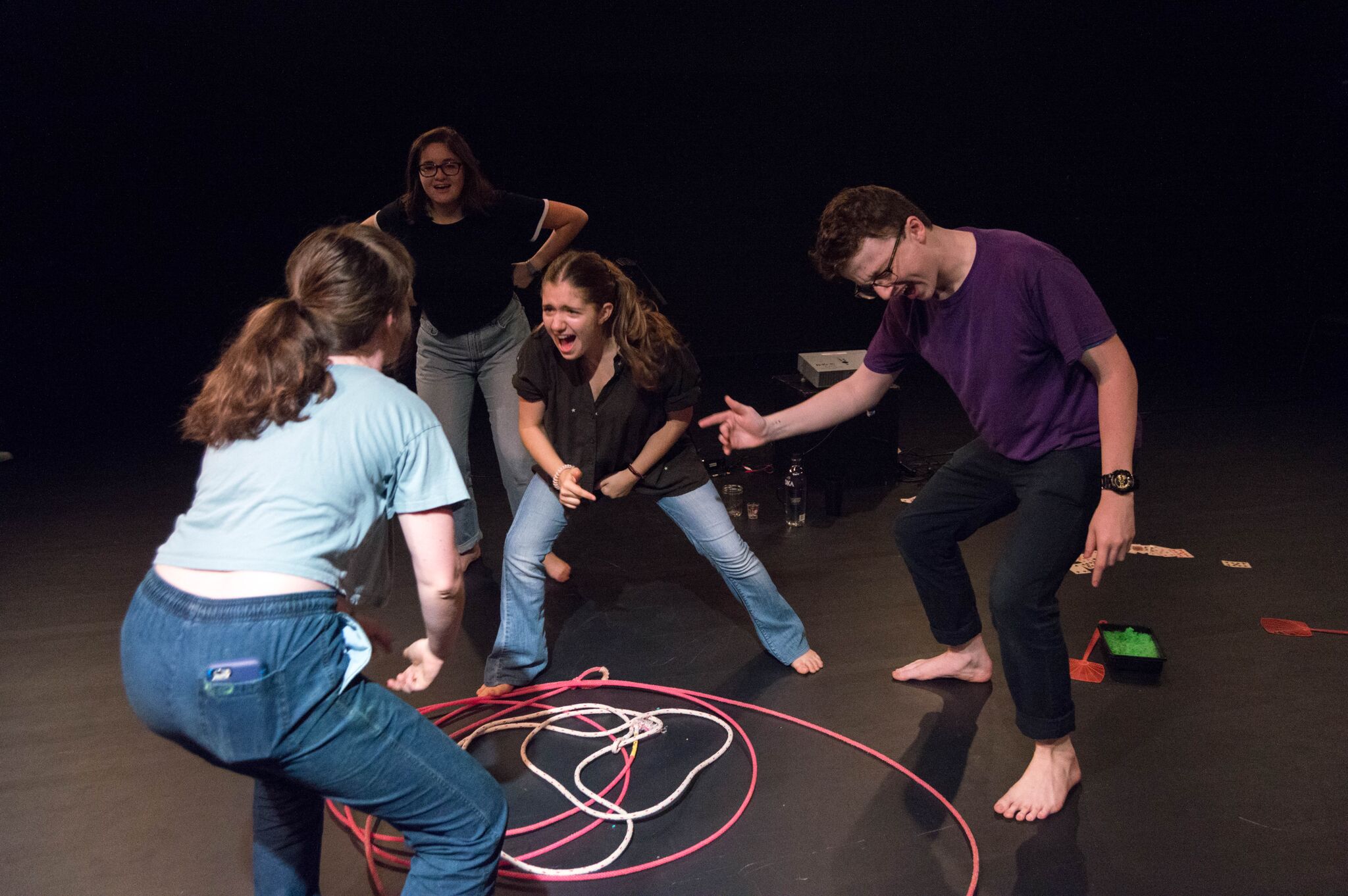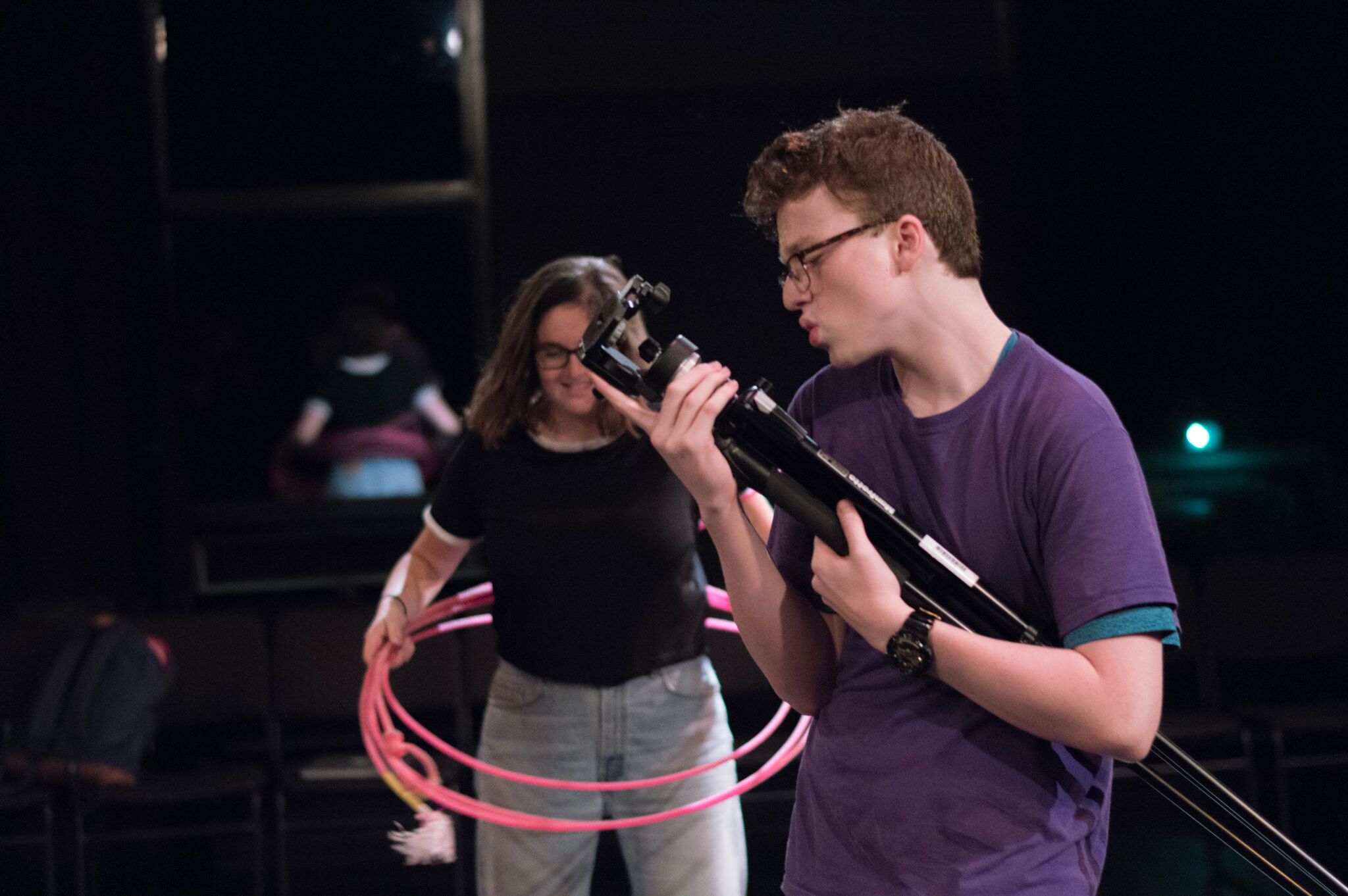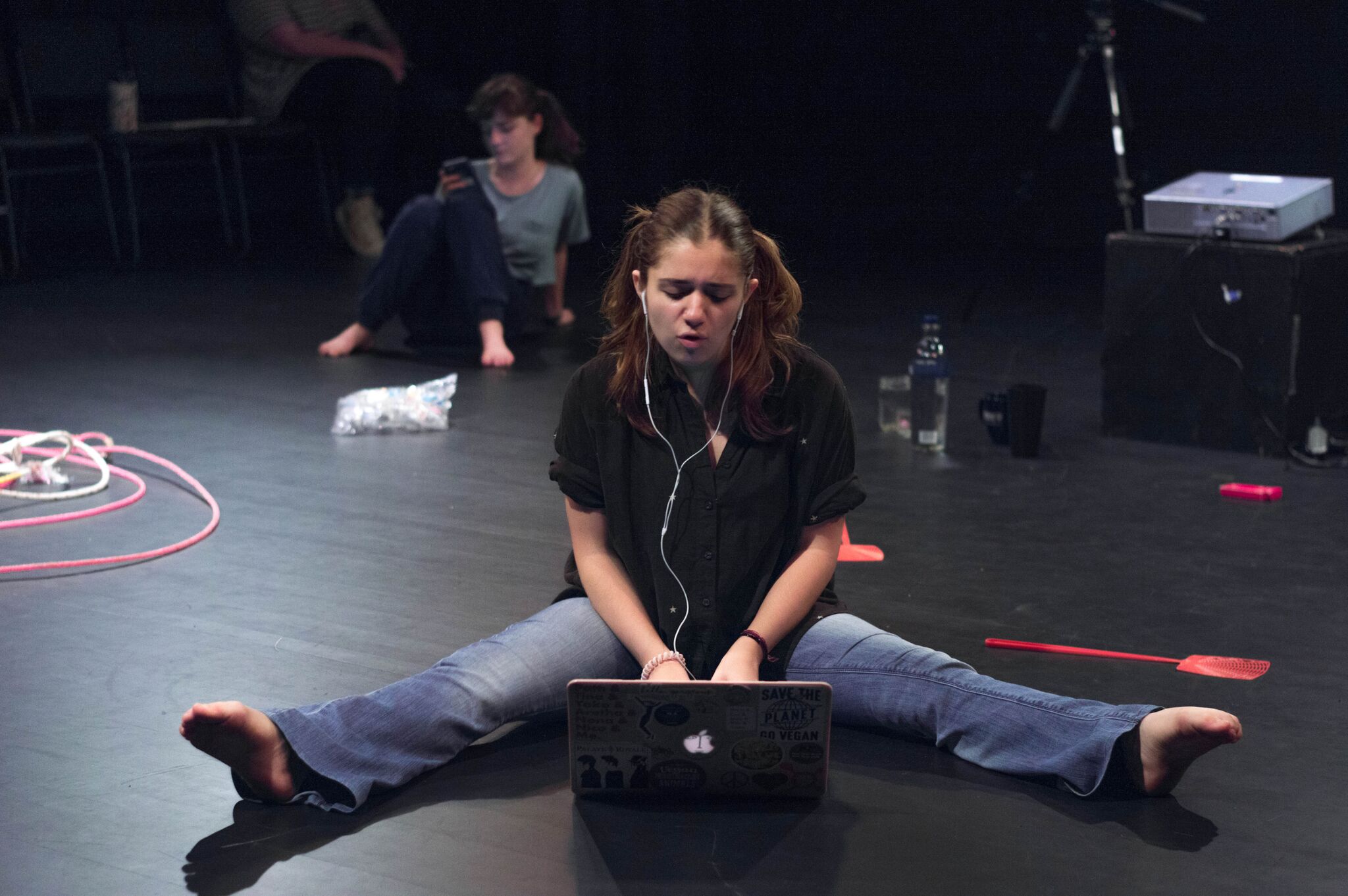Let’s Talk About Talking: Things We Both Like and Why
By Joe Newman-Getzler

The cast of “Things We Both Like and Why” Photo: Dante Haughton ’19
I don’t know about you, but few things puzzle me more than the simple act of having a conversation. There are so many kinds: long, involved conversations. A short bit of hobnobbing, in case both parties are busy. Planned conversations. Spontaneous get-togethers. A long conversation when you’d rather have a shorter one, and the other way around. Sometimes it’s circumstance, sometimes it’s preordained, but unless you know for sure how the other person typically acts or is feeling at that moment, you can never know just how one will go. They can either be the most stressful part of your day – Oh, God, I don’t want to sound like an idiot. What do I say here? Ah, that didn’t come out right! – or the least – Oh hey, here’s so-and-so again. We just texted, now we’re getting dinner, and we’ll probably Facebook message each other later.
So much art has attempted to reconstruct reality and capture that ever-elusive sensation known as “spontaneity.” Few have succeeded, because theater and cinema are so presentational that even the most natural-sounding shows have the obvious lilt of rehearsal and memorization. Improv comes closer, but even then, performers attempt to simulate scripted speech, as if it was all planned. Where is that middle ground? Where do the spontaneity of regular speech and the presentational nature of theater coalesce? One writer who mastered the art of conversational dialogue was Henrik Ibsen. There is a reason his plays, like A Doll’s House, are still performed today. His gift for dialogue means his characters are just as vivid and realistic as they were years ago.

Sarah Marlin ’20 and Andy Soglin ’21. Photo: Dante Haughton
Ibsen’s writing often sounds like an actual conversation. So, here’s the question: what would happen if Henrik Ibsen’s words suddenly found their way into an ordinary conversation? Would you notice? Certainly, if one were to insert a Shakespeare sonnet or Lin-Manuel Miranda rap into a conversation, you would notice (even if Shakespeare’s many invented words are so common that you could make some elbow room for a few if you were in a pickle). This question lies at the heart of Erica Schnitzer ’18’s new student works lab Things We Both Like and Why. The piece begs the question: at what point does conversational theater just becomes a conversation? In the show, four actors – Kat Collin ’21, Sophia Bella Cucci ’20, Sarah Marlin ’20, and Andy Soglin ’21 – converse for half an hour. They discuss movies they want to see and places they want to go that night. There are no character names; the actors go by their own names. There are interludes to enjoy songs such as “Let It Go” and “Party Rock Anthem.” They throw fortune cookies at each other. Why? Because life is short and if you don’t throw fortune cookies at now, when will you ever?

Sophia Bella Cucci ’20. Photo: Dante Haughton ’19
Schnitzer has stated that several Ibsen lines are scattered throughout the largely-improvised play. I could maybe pick out one? In that sense, Schnitzer has accomplished exactly what she set out to do. Yet, if you divorce the play from the ‘Spot the Ibsen’ game, what is the overall sensation? Interestingly enough, slight discomfort. This isn’t a criticism at all; rather, discomfort feels like a natural reaction to listening in on someone’s conversation. In the end, watching Things We Both Like and Why feels like we, the audience, are spying on this group of people having a private, if loud, conversation. At one point, Andy tells a story about a misadventure he had once, and when the audience laughed at the same time as the other actors, I felt a wave of unease. Were we supposed to hear that? Was that something only they were supposed to know? It’s an interesting feeling, considering that so much of theater is listening in on conversations. Willy Loman isn’t telling us about how disappointed he is in his son Biff, and Walter Younger isn’t lamenting to us about losing the money he needed. We’re supposed to hear about them, even if they don’t know it. Here, it’s like watching people in a terrarium. We’re seeing life played before our eyes: the same kind of conversation we’d see in a cafeteria or park or bus. The more naturalistic it sounds, the closer to home it hits.
You may think about a conversation while it’s going on, and you may stop and do a play-by-play afterwards. But how comfortable does that make you feel? It’s a very human emotion, and Things We Both Like and Why is all about the human experience. It deconstructs the idea of theater, of looking in on other people’s lives. It makes you wonder, how much are we really supposed to know?






